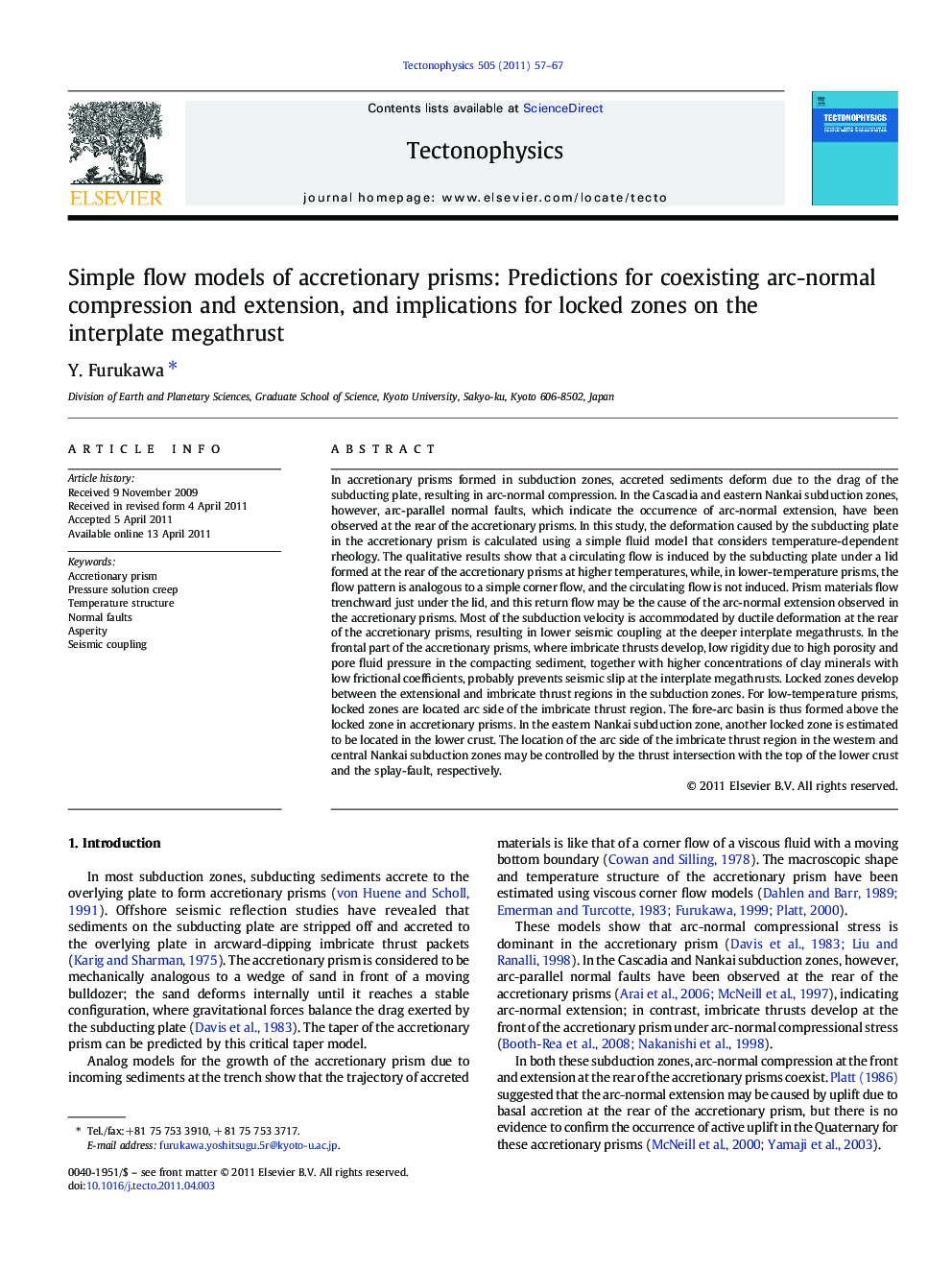| کد مقاله | کد نشریه | سال انتشار | مقاله انگلیسی | نسخه تمام متن |
|---|---|---|---|---|
| 4693114 | 1636844 | 2011 | 11 صفحه PDF | دانلود رایگان |

In accretionary prisms formed in subduction zones, accreted sediments deform due to the drag of the subducting plate, resulting in arc-normal compression. In the Cascadia and eastern Nankai subduction zones, however, arc-parallel normal faults, which indicate the occurrence of arc-normal extension, have been observed at the rear of the accretionary prisms. In this study, the deformation caused by the subducting plate in the accretionary prism is calculated using a simple fluid model that considers temperature-dependent rheology. The qualitative results show that a circulating flow is induced by the subducting plate under a lid formed at the rear of the accretionary prisms at higher temperatures, while, in lower-temperature prisms, the flow pattern is analogous to a simple corner flow, and the circulating flow is not induced. Prism materials flow trenchward just under the lid, and this return flow may be the cause of the arc-normal extension observed in the accretionary prisms. Most of the subduction velocity is accommodated by ductile deformation at the rear of the accretionary prisms, resulting in lower seismic coupling at the deeper interplate megathrusts. In the frontal part of the accretionary prisms, where imbricate thrusts develop, low rigidity due to high porosity and pore fluid pressure in the compacting sediment, together with higher concentrations of clay minerals with low frictional coefficients, probably prevents seismic slip at the interplate megathrusts. Locked zones develop between the extensional and imbricate thrust regions in the subduction zones. For low-temperature prisms, locked zones are located arc side of the imbricate thrust region. The fore-arc basin is thus formed above the locked zone in accretionary prisms. In the eastern Nankai subduction zone, another locked zone is estimated to be located in the lower crust. The location of the arc side of the imbricate thrust region in the western and central Nankai subduction zones may be controlled by the thrust intersection with the top of the lower crust and the splay-fault, respectively.
Research Highlights
► At the rear of the hot accretionary prisms, trenchward flow is induced under a lid by the subducting plate.
► In the hot prisms, arc-normal extension is caused in the lid by the trenchward return flow beneath.
► This ductile flow at the rear of the hot prisms accommodates the shear stress by the subducting plate.
► Forearc basins can be formed trenchward of the ductile flow region.
► The interplate locked zone will be developed below the forearc basin.
Journal: Tectonophysics - Volume 505, Issues 1–4, 3 June 2011, Pages 57–67